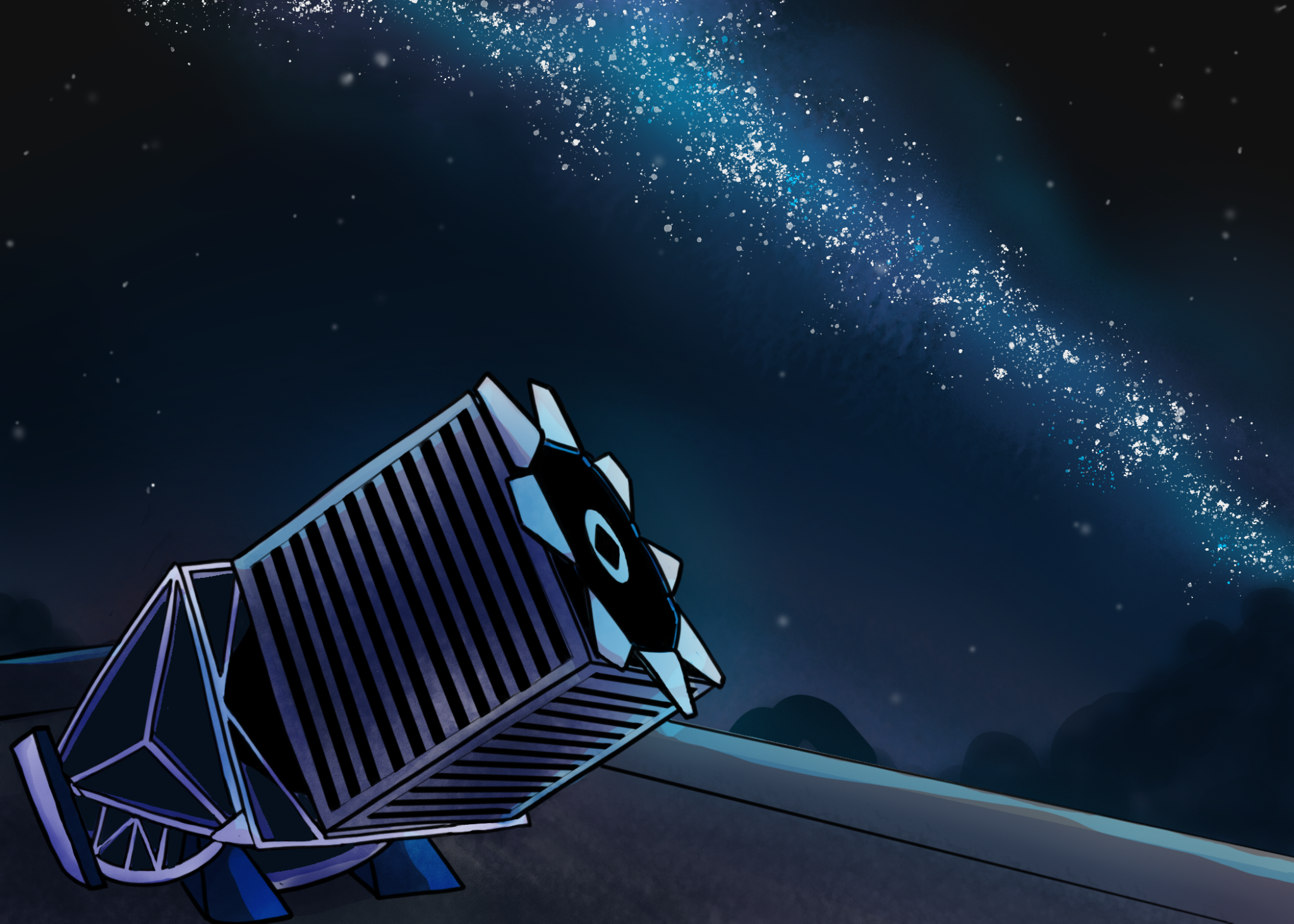Yale astronomers to benefit from new Sloan Digital Sky Survey data
As a full institutional partner in the Sloan Digital Sky Survey, Yale will have a first look at data collected from the five-year-long survey before it is released to the public.

Sophie Henry, Staff Illustrator
The Sloan Digital Sky Survey, the most in-depth three-dimensional astronomical survey ever conducted, is ready to enter its fifth phase, giving Yale astronomers a new view of the universe.
SDSS maps out areas of the sky in detail with ground telescopes and determines the brightness and position of millions of objects in the universe. As a full institutional partner of the SDSS collaboration, Yale is guaranteed access to data collected by the survey before it is formally released to the public, giving Yale astronomers a head start in their research.
According to Robert Zinn GRD ’74, professor of astronomy at Yale, previous SDSS data accounts for the majority of astronomers’ understanding of the universe, offering insights into far reaches of the cosmos as well as nearby stars and galaxies. This fifth phase of the project, SDSS-V, began operations last September and will collect spectroscopic data — information from visible light split into its electromagnetic wavelengths — from types of previously observed objects, including supermassive black holes and galaxies.
“This survey will be collecting data on many more objects of these types than we have previously,” said Zinn, whose research focuses on galaxy structure and formation. “[SDSS-V] will be expanding the sample tremendously, and as you expand this sample there is a real possibility of a new discovery.”
Yale was a full institutional partner of SDSS-III, which mapped the sky from 2008 to 2014, and SDSS-IV, which operated from 2014 to 2020, according to Meg Urry, professor of physics and astronomy. Each survey involves the collaboration of hundreds of astronomers and institutions around the world, and with each new phase, increasingly sophisticated instruments are used to guarantee high quality data, according to Zinn. For SDSS-V, the collaboration will involve two telescopes. One is located at the Apache Point Observatory in New Mexico, and the other is located at Las Campanas Observatory in Chile.
The benefits of being a full institutional partner of the collaboration include early access to the data for any student, faculty or postdoctoral student associated with one of the partner institutions. Affiliates can view the data as soon as it is collected, and the data is released to the general public approximately a year later.
Urry is one of the many astronomers involved in the SDSS project and has served on the advisory committee for both SDSS-III and SDSS-IV. She now sits on the executive committee for SDSS-V. Urry said that the pandemic has had a “severe impact” on the survey, delaying the project’s transition into the fifth phase.
She explained that last spring, the SDSS executive board approved an indefinite delay of the transition at the early onset of the pandemic but had hoped to restart operations soon afterward. But as public health restrictions increased, the project was further delayed. The transition from SDSS-IV to SDSS-V was supposed to occur in early 2020 but was pushed to September.
Urry’s research focuses on supermassive black holes, which reside at the centers of galaxies. For this reason, she is especially interested in the SDSS Black Hole Mapper experiment. The experiment will obtain spectra — wavelengths of light produced after electromagnetic radiation is split through a prism — from approximately 400,000 X-ray sources, primarily black holes. Researchers will perform this experiment with the eROSITA satellite, which was launched in 2019. Urry explained that this new spectrographic data will increase astronomers’ current understanding of the growth of supermassive black holes, as well as their effect on their host galaxies.
Marla Geha, professor of astronomy and physics and the director of the Astronomy Department’s facilities, is one of the astronomers interested in the SDSS Milky Way Mapper project, which will observe four to five million stars in the Milky Way galaxy.
At Yale, Geha’s research is focused on the origin and evolution of dwarf galaxies, and now that SDSS is releasing in-depth data on stars in the Milky Way, she is looking forward to the data release.
“SDSS data has enabled or improved almost all aspects of my research,” Geha wrote in an email to the News. “I am using SDSS-based imaging to determine the properties of these stars and noting those stars which SDSS has already studied in more detail with spectroscopy.”
Zinn told the News that data collected from previous phases of the SDSS have been invaluable to the astronomical community. He expects that this fifth phase will bring even more high quality data that will inspire groundbreaking research.
“I think all observational astronomers, and many theorists, have used the data from previous Sloan surveys in their research because there is a wealth of information there,” Zinn said. “And even though the people inside the consortium get first shot at it, a few years down the road after the data is published it is still possible to make discoveries from it.”
Data from SDSS-V will be released in the summer of 2022, two years after its launch.
Nicole Rodriguez | nicole.rodriguez.nr444@yale.edu







